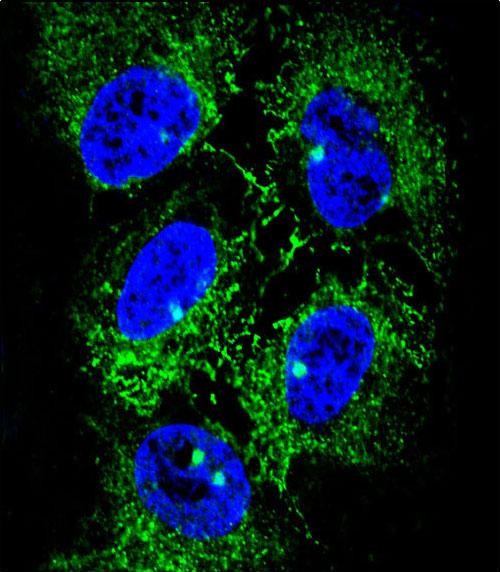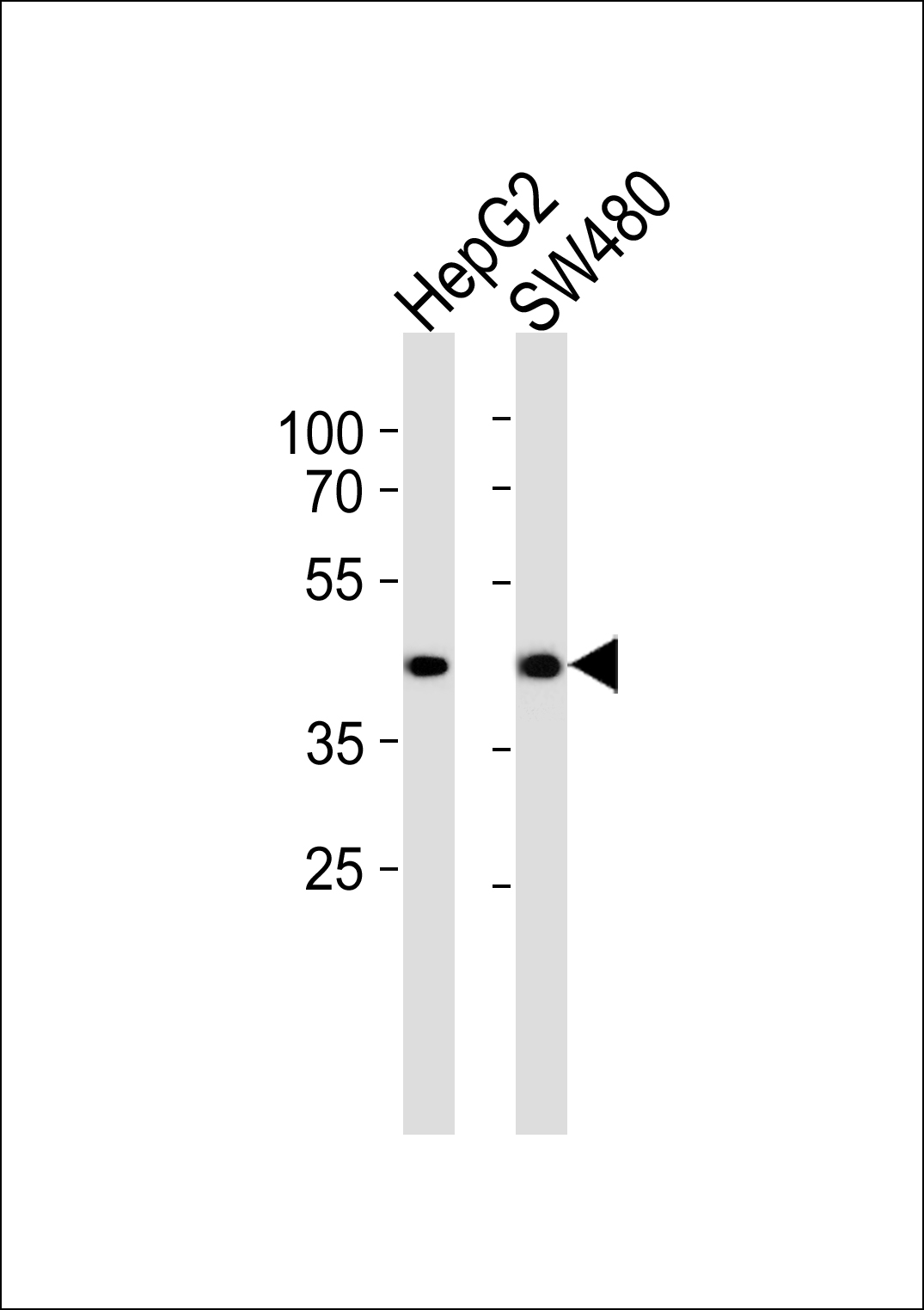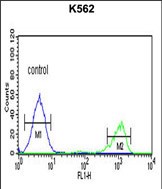ADH7 Antibody (C-Term)
Affinity Purified Rabbit Polyclonal Antibody (Pab)
- SPECIFICATION
- CITATIONS
- PROTOCOLS
- BACKGROUND

Application
| WB, IF, FC, IHC-P, E |
|---|---|
| Primary Accession | P40394 |
| Reactivity | Human |
| Host | Rabbit |
| Clonality | Polyclonal |
| Isotype | Rabbit IgG |
| Calculated MW | 41481 Da |
| Antigen Region | 318-346 aa |
| Gene ID | 131 |
|---|---|
| Other Names | Alcohol dehydrogenase class 4 mu/sigma chain, Alcohol dehydrogenase class IV mu/sigma chain, Gastric alcohol dehydrogenase, Retinol dehydrogenase, ADH7 |
| Target/Specificity | This ADH7 antibody is generated from rabbits immunized with a KLH conjugated synthetic peptide between 318-346 amino acids from the C-terminal region of human ADH7. |
| Dilution | WB~~1:1000 IF~~1:10~50 FC~~1:10~50 IHC-P~~1:50~100 E~~Use at an assay dependent concentration. |
| Format | Purified polyclonal antibody supplied in PBS with 0.09% (W/V) sodium azide. This antibody is purified through a protein A column, followed by peptide affinity purification. |
| Storage | Maintain refrigerated at 2-8°C for up to 2 weeks. For long term storage store at -20°C in small aliquots to prevent freeze-thaw cycles. |
| Precautions | ADH7 Antibody (C-Term) is for research use only and not for use in diagnostic or therapeutic procedures. |
| Name | ADH7 (HGNC:256) |
|---|---|
| Function | Catalyzes the NAD-dependent oxidation of all-trans-retinol, alcohol, and omega-hydroxy fatty acids and their derivatives (PubMed:15369820, PubMed:16787387, PubMed:9600267). Oxidizes preferentially all trans-retinol, all-trans-4-hydroxyretinol, 9-cis- retinol, 2-hexenol, and long chain omega-hydroxy fatty acids such as juniperic acid (PubMed:15369820, PubMed:16787387, PubMed:9600267). In vitro can also catalyze the NADH-dependent reduction of all-trans- retinal and aldehydes and their derivatives (PubMed:15369820, PubMed:16787387, PubMed:9600267). Reduces preferentially all trans- retinal, all-trans-4-oxoretinal and hexanal (PubMed:15369820, PubMed:16787387). Catalyzes in the oxidative direction with higher efficiency (PubMed:15369820, PubMed:16787387). Therefore may participate in retinoid metabolism, fatty acid omega-oxidation, and elimination of cytotoxic aldehydes produced by lipid peroxidation (PubMed:15369820, PubMed:16787387, PubMed:9600267). |
| Cellular Location | Cytoplasm. |
| Tissue Location | Preferentially expressed in stomach. |
If you have used an Abcepta product and would like to share how it has performed, please click on the "Submit Review" button and provide the requested information. Our staff will examine and post your review and contact you if needed.
If you have any additional inquiries please email technical services at tech@abcepta.com.














 Foundational characteristics of cancer include proliferation, angiogenesis, migration, evasion of apoptosis, and cellular immortality. Find key markers for these cellular processes and antibodies to detect them.
Foundational characteristics of cancer include proliferation, angiogenesis, migration, evasion of apoptosis, and cellular immortality. Find key markers for these cellular processes and antibodies to detect them. The SUMOplot™ Analysis Program predicts and scores sumoylation sites in your protein. SUMOylation is a post-translational modification involved in various cellular processes, such as nuclear-cytosolic transport, transcriptional regulation, apoptosis, protein stability, response to stress, and progression through the cell cycle.
The SUMOplot™ Analysis Program predicts and scores sumoylation sites in your protein. SUMOylation is a post-translational modification involved in various cellular processes, such as nuclear-cytosolic transport, transcriptional regulation, apoptosis, protein stability, response to stress, and progression through the cell cycle. The Autophagy Receptor Motif Plotter predicts and scores autophagy receptor binding sites in your protein. Identifying proteins connected to this pathway is critical to understanding the role of autophagy in physiological as well as pathological processes such as development, differentiation, neurodegenerative diseases, stress, infection, and cancer.
The Autophagy Receptor Motif Plotter predicts and scores autophagy receptor binding sites in your protein. Identifying proteins connected to this pathway is critical to understanding the role of autophagy in physiological as well as pathological processes such as development, differentiation, neurodegenerative diseases, stress, infection, and cancer.





